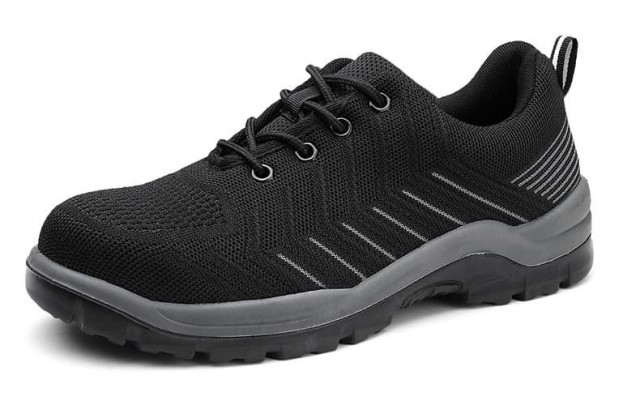Workplace hazards demand footwear that won’t fail when it matters most. For distributors, brand owners, and bulk buyers, understanding PVC quality and certifications isn’t just about product specs—it’s about ensuring worker safety and reducing replacement costs. This guide breaks down the science of durable PVC, critical certifications, and maintenance practices that extend boot lifespans.
What Makes PVC Truly Durable?
PVC (polyvinyl chloride) dominates the work boot market for its balance of affordability and resilience. But not all PVC is created equal. Here’s what separates high-performance formulations from substandard materials:
The Role of Polymer Blends and Additives
- Plasticizers: Flexible PVC requires additives like phthalates to resist cracking in cold temperatures. Boots without adequate plasticizers stiffen over time, increasing tear risk.
- Stabilizers: Heat and UV stabilizers prevent degradation in outdoor environments. Look for boots labeled "weather-resistant" for jobsites with sun exposure.
- Fillers: Calcium carbonate or talc reduce costs but can weaken material integrity. Premium blends limit fillers to under 20% of the composition.
Stress Tests: Flex Resistance vs. Impact Resistance
- Flex Resistance: Quality PVC withstands 50,000+ flex cycles (simulating 6–12 months of heavy use) without visible cracks.
- Impact Resistance: ASTM F2412-18a tests verify toe protection against 75–100 ft-lbs of force—equivalent to a 20 lb tool dropped from 4 feet.
Key Insight: Boots that pass both tests offer all-day comfort (flex resistance) and accident protection (impact resistance), reducing long-term liability risks.
Certifications That Matter
A logo on the boot doesn’t guarantee performance. Here’s how to interpret the fine print:
Beyond the Logo: Interpreting ASTM F2413 and ISO 20345
-
ASTM F2413 (U.S. Standard):
- Puncture Resistance: As referenced in your materials, the standard requires a steel or composite plate to withstand 270 lbs of force—enough to stop nails or screws.
- Electrical Hazard (EH) Rating: Boots must resist 18,000 volts for 1 minute without current flow.
-
ISO 20345 (Global Standard):
- Slip Resistance: Tested on ceramic tiles coated with soapy water (SRA rating) or glycerol (SRC rating).
- Energy Absorption: Heel cushions must absorb 20+ joules of energy to reduce joint fatigue.
How Third-Party Testing Validates Claims
Independent labs like SATRA or TÜV Rheinland verify:
- Material Consistency: Batch testing ensures every pair meets the claimed durability standards.
- Long-Term Performance: Accelerated aging tests simulate 2+ years of use in 12 weeks.
Pro Tip: Request test reports from manufacturers like 3515 to confirm compliance before bulk orders.
Maintenance as a Lifespan Multiplier
Even the best PVC degrades without proper care. These practices can double a boot’s usable life:
Cleaning Protocols for Chemical Resistance
- Oil/Grease Exposure: Wipe with a mild detergent (pH 7–9) immediately to prevent plasticizer leaching.
- Acid/Alkali Contact: Rinse with water within 10 minutes to avoid surface erosion.
Storage Practices to Prevent Premature Cracking
- Avoid Heat Sources: Store boots away from radiators; temperatures above 140°F (60°C) warp soles.
- Use Boot Trees: Maintain shape during off-seasons to prevent crease-related cracks.
Real-World Impact: A food processing plant reduced boot replacements by 40% after training staff on these protocols.
Partner with 3515 for Work Boots That Outperform
For distributors and brands seeking reliable PVC work boots, 3515 combines rigorous certification compliance with industrial-grade materials. Our production expertise ensures:
- Bulk Consistency: Every batch meets ASTM/ISO standards with third-party validation.
- Custom Formulations: Tailored PVC blends for extreme temperatures or chemical-heavy environments.
Next Step: Contact our team to discuss volume pricing and testing documentation for your specific workplace needs.
Final Thought: In high-risk industries, durable footwear isn’t an expense—it’s an investment in safety and operational continuity. By prioritizing verified PVC quality and proactive maintenance, buyers protect both workers and profit margins.
Related Products
- Wholesale Customizable Suede Safety Boots - Puncture-Proof with Velcro Closure
- Puncture-Resistant Velcro Safety Boots for Wholesale & Custom Manufacturing
- Wholesale Classic Leather Lace-Up Ankle Boots for Brand Manufacturing
- Durable Mid-Cut Tactical Boots for Wholesale & Private Label
- Wholesale Durable Mid-Cut Tactical Boots for Custom & Private Label Brands
Related Articles
- How to Extend Work Boot Lifespan: Science-Backed Care for Safety & Savings
- Steel Toe Work Boots: Balancing Safety and Comfort for Demanding Jobs
- How to Choose Work Boots That Balance Safety, Comfort, and Durability for Your Job
- How to Choose Work Boot Materials for Maximum Safety and Durability
- How to Choose Work Boots That Match Your Industry's Safety Needs



















